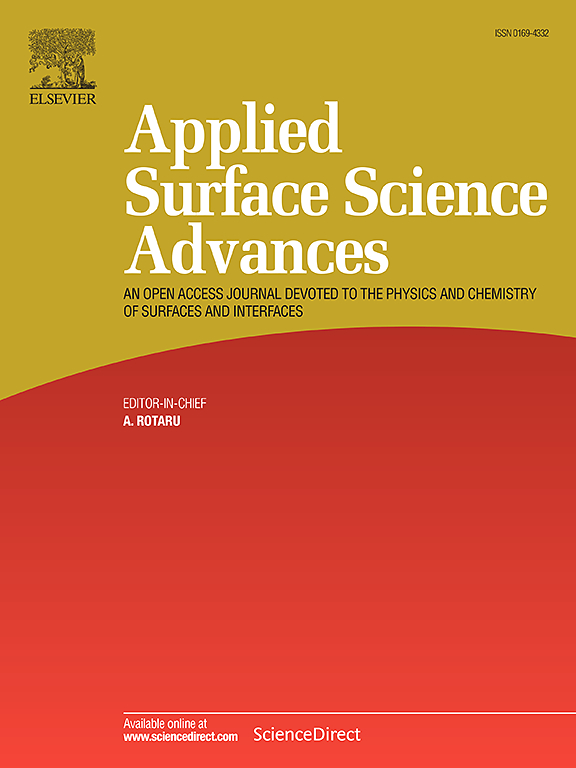A DFT study of lithium intercalation and metallization on oxygen-vacancy containing TiO2(110)
IF 7.5
Q1 CHEMISTRY, PHYSICAL
引用次数: 0
Abstract
We investigate the possible adsorption sites for Li on perfect and defective TiO2(110) using DFT+U calculations. Two systems with an oxygen di-vacancy are generated and we test the diffusion and the effects of increasing the number of Li in the most stable configurations. The oxygen vacancy in the first and second layers facilitates the diffusion of Li. We found that Li migration is stopped at the bulk-like defect-free layers in the direction normal to the surface. The DOS of the lithiated system shows that the changes take place at the lower end of the conduction band. Li becomes Li+1, and the charge density difference diagrams show the redistribution of charge to the neighboring atoms. When Li is intercalated at the (110) surface, the most important change occurs at the Fermi level (EF) and is caused by the interaction between Ti 3d and Li 2s orbitals. When N-lithium (N = 1, 2, 3) is considered in the defective system, the bonding order of Li atoms increases with the amount of adsorbed alkali metal atoms. In the case of Li intercalation, the sum of the bond order of all atoms is higher than in the adsorbed case, while for the Li atom, it is almost twice as high. When more Lithium is considered, new Li-O bonds are formed. Ab initio molecular dynamics simulations (AIMD) are performed, to check the stability of the system. This study shows that Li adsorption, intercalation and diffusion is possible for a realistic TiO2(110) surface.
含氧空位TiO2(110)上锂嵌入和金属化的DFT研究
我们利用DFT+U计算研究了Li在完美和缺陷TiO2(110)上可能的吸附位点。生成了两个氧双空位体系,并在最稳定的构型中测试了扩散和增加Li数量的效果。第一层和第二层的氧空位有利于Li的扩散。我们发现,在与表面垂直方向的块状无缺陷层处,Li的迁移停止了。锂化体系的DOS表明,这种变化发生在导带的下端。Li变成Li+1,电荷密度差图显示了电荷向邻近原子的重新分配。当Li在(110)表面插入时,最重要的变化发生在费米能级(EF),这是由Ti 3d和Li 2s轨道之间的相互作用引起的。当缺陷体系中考虑N-锂(N = 1,2,3)时,Li原子的成键顺序随着吸附碱金属原子的数量增加而增加。在Li插入的情况下,所有原子的键序总和高于吸附情况,而Li原子的键序总和几乎是吸附情况的两倍。当考虑更多的锂时,就会形成新的Li-O键。通过从头算分子动力学模拟(AIMD)验证了系统的稳定性。本研究表明,在现实的TiO2(110)表面上Li的吸附、插层和扩散是可能的。
本文章由计算机程序翻译,如有差异,请以英文原文为准。
求助全文
约1分钟内获得全文
求助全文

 求助内容:
求助内容: 应助结果提醒方式:
应助结果提醒方式:


